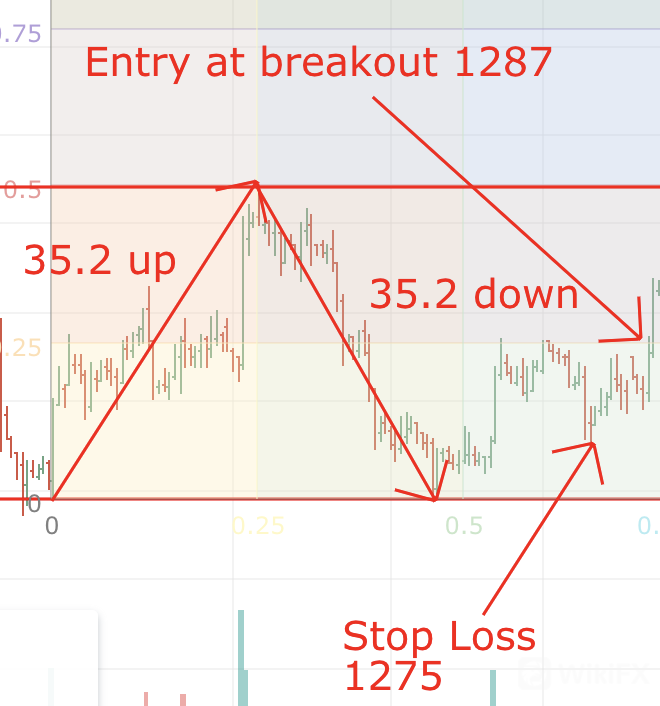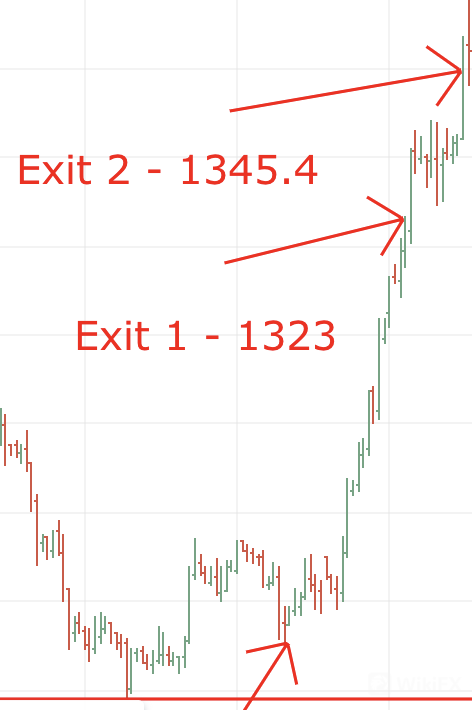
Trading is an emotional game – I‘ve talked about this a number of times in previous articles that I’ve written, as have countless others over the years. There is a well-written research article titled “Trading is hazardous to your wealth” written by Brad Barber and Terence Odean from The University of California in 2000 that has a number of insights regarding about 66,000 traders that they surveyed over a period of 5 years. The main takeaway that I took from this article is that most people who attempt to trade on their own underperform the index, and generally rip up their trading account – and the longer they attempt to trade the higher the likelihood of failure. That isnt to say that all traders will inevitably fail, more that within a set pool of traders, every year more and more traders fail and leave the pool, leaving only the most elite to continue on. Generally the cause of this is over confidence following a win, being too defensive following a loss and being inconsistent with how they approached a market – including strategy, risk and capital allocation. Many of these problems can be solved by simply having a plan, following it and updating if necessary based on the data you gather from your trading wins and losses.
Trading, Investing and anything that moves your financial position forward requires both planning and effort – even in a world as insane as cryptocurrency. All new and existing market participants have seen that things that go up must come back down again – history has shown us this time and time again – without this dynamic it would be too easy to make money and everyone would do it.
I'm not trying to push financial advice or say that buy and hold isnt a worthwhile long term strategy, however in my view trading markets is a skill – something that needs to be learned, approached with your own personal skill-set and with your strategy being constantly monitored and revised.
The idea is that you don‘t get greedy. There is a saying in Wall Street – Bulls get paid, Bears get paid and pigs get slaughtered. Greed, however isn’t the only emotion you should be conscious of – there is also Fear, Pain and Hope. Fear that it will go lower, Pain of loss (sell/exit and just end the pain, please), and hope that it will go up again.
How do you combat this? It's like fighting against something that makes us all human
Have a plan.
The contents of the plan, is less important than the fact that you have a plan to begin with. So lets look at the basic components of what makes up a trading plan, and then how we pull it all together –
Entry price
This, unfortunately is the least important as if you complete all the other factors correctly – the entry price will be derivative of the other parts of your analysis – however its usually the part most amature traders consider first.
Risk
How much of your capital are you happy to lose if the trade goes against you – this is important to get right as it will dictate how much risk you are putting up vs the potential profit that you are looking at making. Risk vs Reward is paramount to successful trading – taking trades that have a low RvR (sub 1:2) will inevitably see you rip up your account the majority of the time
Capital Management
How much of your overall account will you put into a trade? If its over 10% chances are its too high. Trading is a long-game and not for those seeking quick and easy profits.
Exit
This is probably the most important component – as you need to have set when you will exit a trade before you have even taken it. This may seem backward but it is probably the biggest mistake most amature traders make. By setting your exit both if the trade goes in your favor or against it sets your risk, and ensures that you will take profit without getting greedy, potentially turning a winning position into a losing one – which honestly is the most frustrating thing to deal with as a trader.
Strategy
How are you going to trade the position – will you enter your whole position in 1 hit and exit in 1 hit? Will you ladder your entry and exit or a combination of either.
Optional: Fundamental Support
How does the current fundamental data about your position affect your trade? Is there potential news coming out in the future that may affect your trade and how will you factor that in? Sometimes overthinking the fundamentals can overcomplicate a trade, however its important to understand what is going on around the world.
Optional: Time
How long are you prepared to hold the trade before you exit? Not to get into too much detail but theres a saying in trading – “never turn a short-term trade into a long-term investment” and if you have a position that you expect to move in one direction or another, an extended period of low volatility can indicate a potential change in trend for example.
So when we put it all together we tabulate the data into something that may look like this

And this is based off the following chart:

So above we see a nice double bottom on Gold that occured in May (2nd bottom on the 21st of May) using a 4 hour chart. As a general rule of thumb a double bottom will do 200% of the previous run up. So in this case we have seen an even run up and down of 35.2 points – so an expected high to occur 70.4 points higher at 1345.4. As we follow the market we have a higher bottom form (1275) and we then look to enter on a break out of the first high made after the formation of the double bottom (1287). From here we know our risk in the trade will be 120 ticks.
Assuming we have a trading account of $50,000, we can take 3 Gold Contracts which would give us an overall risk of about 7% of our portfolio. This is usually a bit high, however double bottoms are statistically one of the better forming indicators on this market so I would be happy to take a slightly higher risk to take 3 contracts rather than only 2.

Thankfully in this case – the trade went in our favor – I chose to de-risk the entire trade as soon as I could so as soon as 1 of my 3 contracts had made $3,600 in profit as planned I exited 1 contract meaning that even if the trade entirely retraced I would have broken even. Gold, however continued to rise and we saw our profit target reached and we exited with a nice profit of $15,280.
All of this data can be derived from the trading plan even before the market has moved – that is the whole purpose of the trading plan. Gold actually continued to rally after this trade had been completed, and we would have made more money if we held on. This however, is irrelevant as trading is a long journey where we look for consistently profitable setup and we trade them accordingly, it is always better to take profits off the table and look for another setup rather than get greedy and try and capture every available dollar.
As a final piece of this it is important to record the trade in a log to indicate the setup that was used, the risk, Risk vs Reward and outcome of each trade you take so that you can monitor what setups work on what markets how how successful your strategy is so that you can update if necessary. Taking this reflective, and perhaps boring action is a defining characteristic of a successful versus an unsuccessful trader.
Also you should note that although the best use-case for calling prices on most markets is Technical Analysis – which is great but anyone who trades will know, you trade whats in front of you today, not some lines on a chart that may or may not go in a certain direction in 12 months in time. Technical Analysis is indicative, not a crystal ball and more often than not people get it wrong and you need to be prepared for that.
So to bring this all together – you need to have a plan and strategy that you have learned or that you have seen work for a trader or mentor that you have worked with, you then need to adjust that plan after seeing what works and doesn‘t work for you on the markets you trade. The most important thing is to consistently manage is your risk, the risk vs reward of your trades and ensure that you don’t get into positions that you will lose your mind over having open. Do all of this and there is a chance you may be one of the 4% of traders that come out alive after a few years.
Author – Luke Jones

========
Check Out for the Top 10 Forex brokers in India October 2021
IC Markets
XM
Exness
Fortrade
GO MARKETS
Hantec
TMGM
ATFX
FOREX.com
CTRL INVESTMENTS
========

Leave a Reply